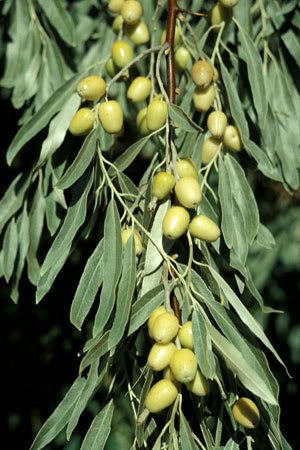Tree leaf identification in the Western Region of North America is a fairly expansive subject area, with more than 300 species of trees to be found, some introduced from other continents but many native to the region.
The Digger Pine, is widely seen in California, often found at elevations of between 300 and 900 metres, in the dry foothill woodland communities of California's Central Valley.
The huge female cones, long flexible needles in bundles of 3, growing on a crooked, forking trunk, with branches that are not horizontal. The needles are dull gray green and droop noticeably.
Mature trees are usually between 40 and 50 feet tall, the tree bark is dark gray, thick, and broken into scaly ridges.
The Austrian Pine, brought to the USA in the late 1800's is widely spread across North America

Has evergreen needles, 4 to 6 inches long, flexible with two thick, dark green needles per fascicle. The tree reaches up to 100 feet tall with a very dense crown. The cones are ovoid, 2 to 3 inches long, yellow-brown.
The Russian Olive is another non-native species, having been introduced from Germany in the late 1800's.
In the West, Russian-olive occurs mainly in the Great Basin Desert region at 800-2000 feet elevation and is also abundant in riparian zones of the Great Plains, for example, the Platte River in Nebraska.

In the West, Russian-olive occurs mainly in the Great Basin Desert region at 800-2000 feet elevation and is also abundant in riparian zones of the Great Plains, for example, the Platte River in Nebraska.

It is a small, usually thorny tree that can grow to 30 feet in height. Its stems, buds, and leaves have a dense covering of silvery to rusty scales. Leaves are egg or lance-shaped, smooth margined, and alternate along the stem. Highly aromatic, creamy yellow flowers appear in June and July and are later replaced by clusters of abundant silvery fruits.
Because Russian-olive is capable of fixing nitrogen in its roots, it can grow on bare, mineral substrates and dominate riparian vegetation where over story cottonwoods have died.
The Sitka Willow, by contrast, is a native tree, growing predominately in WesternNorth America from Alaska California

Because Russian-olive is capable of fixing nitrogen in its roots, it can grow on bare, mineral substrates and dominate riparian vegetation where over story cottonwoods have died.
The Sitka Willow, by contrast, is a native tree, growing predominately in Western

The Sitka Willow is a 1-8m small tree with sparsely hairy and velvety twigs, alternate deciduous and tapering leaves with a green and sparsely silky upper side and a satiny and short-haired lower side. Found in stream-sides, thickets, lake shores and wetland margins and clearings at up to 400m elevation.
Publish Post
A very useful guide to tree and tree leaf identification in the Western region, is
National Audubon Society Field Guide to North American Trees: Western Region (Audubon Society Field Guide)
Please feel free to post comments and suggestions to this blog on tree leaf identification
Publish Post
A very useful guide to tree and tree leaf identification in the Western region, is
National Audubon Society Field Guide to North American Trees: Western Region (Audubon Society Field Guide)
Please feel free to post comments and suggestions to this blog on tree leaf identification

3 comments:
As a fan of North American wild areas I really liked this blog and wondered at the vast difference in tree types in the US and Great Britain. Of course many of our more exciting British trees such as the Douglas Fir were originally brought over from the western US. This tree-id blog gives a flavour of what we have in the British woodlands today:
http://www.woodlands.co.uk/owning-a-wood/tree-identification/
thanks for taking time to comment on the blog Angus. I have a blogged one page on the Caledonian Forest. I will hop over to your site to take a look
Hi there it's me, I am also visiting this site regularly, this site is really pleasant and the visitors are actually sharing pleasant thoughts.
Also visit my homepage: mortgage Qualification calculator
Post a Comment